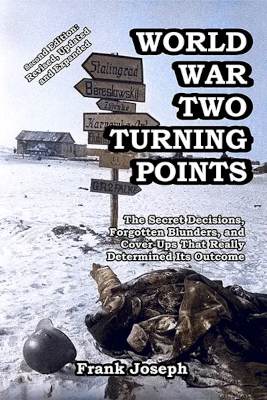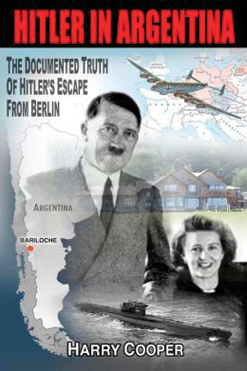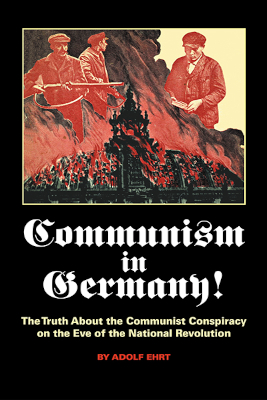Description
World War Two Turning Points: The Secret Decisions, Forgotten Blunders, and Cover-Ups That Really Determined Its Outcome. Second Edition: Revised, Updated and Expanded
By Frank Joseph. Was the course of the Second World War decided at the battles of Stalingrad, El Alamein, Normandy, and Midway? Did Japan decide to surrender after the atom bomb attacks on Hiroshima and Nagasaki? Was Hitler an “incompetent military leader” whose bungling orders condemned the German armed forces to defeat?
This engrossing and encyclopedic work answers all these questions and many more, in a survey of the real causes of the ultimate outcome of that conflict—and reveals that the traditional interpretation of the war’s progress is not only false, but often deliberately misleading.
Highlighting twenty-one major events, decisions, and strategic failures, World War Two Turning Points reveals the much deeper, and often predetermined factors, which lie behind the well-known course of events.
Starting with the fact that the Allies cracked all the German and Japanese codes—and had advance notice of every single initiative—which played a major role in defeating the Axis juggernaut, World War Two Turning Points goes on to list all the other factors which made it impossible for the war to have gone in any other direction.
From this review, it becomes clear that Hitler was in fact a military genius whose decisions and orders, had they been carried through in full by his subordinates, were almost always correct. Only treason, code-breaking, and lower rank incompetence sabotaged the German leader.
Other topics covered include little known or understood strategic failures, such as the German navy’s decision to build capital ships instead of submarines, the Finnish army’s refusal to defeat the Soviets at Leningrad, Japan’s failure to invade the Soviet Union when that state was at its weakest point, and a full discussion of the German “wonder weapons” and how, but for lower-ranking mistakes, they could have changed the course of the entire conflict.
A gripping study, and highly recommended for anyone wishing to gain a deeper understanding of the driving forces behind the world’s greatest and most tragic conflict.
Indexed. New second edition, completely revised and updated. Lavishly illustrated with 167 rare photographs.
Contents:
- Introduction: For Want of a Nail
- PART I: Pst! Feind hört mit!: Quiet! The enemy’s listening!”
- Chapter 1: The Ultra Catastrophe
- Chapter 2: Treason
- Chapter 3: Dunkirk
- Chapter 4: Operation Sea Lion
- Chapter 5: Operation Lüttich
- PART II: The Best Laid Plans
- Chapter 6: Hitler’s Original Plans
- Chapter 7: The German “Z” Plan
- Chapter 8: The Japanese “Z” Plan
- Chapter 9: The American Plan
- PART III: Missed Opportunities
- Chapter 10: Italy Snatches Defeat from the Jaws of Victory
- Chapter 11: Who Sabotaged Operation Barbarossa?
- Chapter 12: Refusing to Finish off Leningrad
- Chapter 13: Stalin’s Mistake
- Chapter 14: Japan’s “Chance of a Lifetime”
- PART IV: Sea Trials
- Chapter 15: Battleship Bismarck
- Chapter 16: U-Boats
- Chapter 17: Japan’s Super Submarines
- PART V: Wonder Weapons
- Chapter 18: Rocket Planes from Germany to Japan
- Chapter 19: The German Jet Controversy
- Chapter 20: Balloon Bomb versus Atom Bomb
- Chapter 21: Japan’s Ignored Offers of Peace
- Afterword: Röhm, Rommel, and Yamamoto
- Appendix: Who Started the Bombing of Civilians in World War II?
- References
- Index
354 pages. Softcover.


